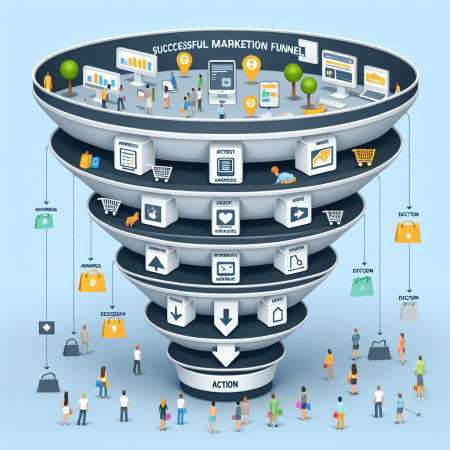How to Create an Online Marketing Funnel for Your Business
Section 1
In the initial stage of creating an online marketing funnel for your business, it is essential to define your target audience. Understanding who your potential customers are, their demographics, interests, and pain points will help you tailor your marketing messages effectively. Conduct market research to gather data on your target audience’s preferences and behaviors, which will guide your marketing strategies.
Once you have a clear picture of your target audience, develop buyer personas to represent different segments of your ideal customers. These personas will help you personalize your marketing efforts and create content that resonates with each group. By crafting detailed buyer personas, you can address specific needs and concerns at each stage of the funnel, ultimately driving conversions and sales.
Subsection 1
After defining your target audience and creating buyer personas, the next step is to build a compelling landing page for your online marketing funnel. A landing page is a standalone web page designed to capture visitor information through a lead generation form. When designing a landing page, focus on a clear call-to-action (CTA) that prompts visitors to take the desired action, such as signing up for a newsletter or requesting more information.
Optimize your landing page with persuasive copy and engaging visuals to entice visitors to complete the desired action. Use A/B testing to experiment with different elements on your landing page, such as headline, imagery, and form placement, to determine the most effective combination that drives conversions. Continuously analyze and refine your landing page to improve its performance and maximize lead generation.
Subsection 2
Email marketing is a powerful tool to nurture leads and guide them through the online marketing funnel. Develop an email sequence that delivers valuable content to subscribers based on their interests and engagement with your brand. Personalize your emails to address individual needs and preferences, building a strong relationship with leads over time.
Segment your email list to send targeted messages to different audience segments, maximizing relevance and engagement. Monitor key metrics such as open rates, click-through rates, and conversion rates to measure the effectiveness of your email campaigns. Adjust your messaging and frequency based on performance data to optimize your email marketing efforts and move leads further down the funnel.
Subsection 3
Social media marketing plays a crucial role in driving traffic to your online marketing funnel and engaging with potential customers. Identify the social media platforms where your target audience is most active and create a content strategy that resonates with their interests. Share blog posts, videos, and other relevant content that provides value to your followers and encourages them to learn more about your products or services.
Engage with your audience through comments, direct messages, and interactive posts to build a sense of community around your brand. Leverage social media advertising to reach a wider audience and promote your lead magnets, such as ebooks or webinars, to capture new leads. Monitor social media analytics to track engagement metrics and adjust your strategy to enhance performance and drive traffic to your online marketing funnel.
Subsection 4
Another critical component of an online marketing funnel is conversion rate optimization (CRO). Analyze user behavior on your website and landing pages to identify areas for improvement and increase conversion rates. Conduct A/B testing on elements such as headlines, CTAs, and page layouts to determine the most effective variations that drive conversions.
Utilize heatmaps and user session recordings to understand how visitors interact with your website and identify potential obstacles to conversion. Make data-driven decisions to optimize your funnel for a seamless user experience and remove any friction points that may hinder conversions. Continuously test and refine your funnel to maximize conversions and achieve your business goals.
Section 2
[Content for Section 2]
Section 3
[Content for Section 3]
Section 4
[Content for Section 4]
Section 5
[Content for Section 5]
Related Content
- 7 Tips for Success in Internet Marketing
- How to Use Data to Improve Your Coaching Business Performance
- Align marketing with honest reflections of the world your customers inhabit
- The Customer Segmentation That Transformed My Email Results
- The Importance of Self-Care When Running a Coaching Business Online

